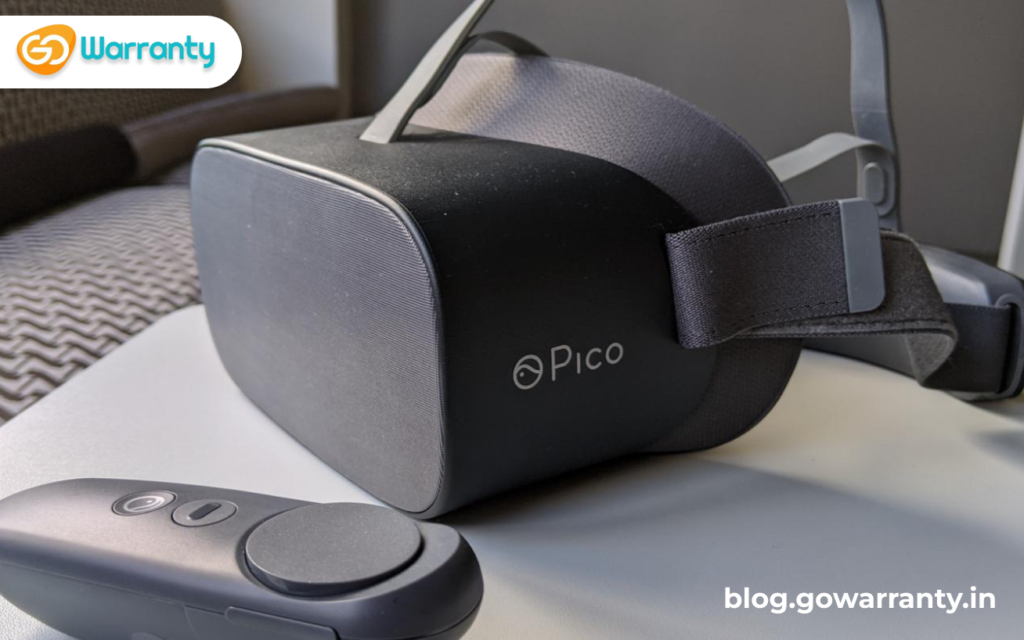VR headsets are much more than just the hardware, as the Pico 4 VR demonstrates for better or worse. Though, on paper, this should be a slam dunk against its closest rival, Meta Quest 2. It has better specs for a lower price and is more comfortable to wear. But does that compensate for a limited app/game library and a lack of exclusives that Zuck has amassed with the force of a metric tonne of cash? To slightly spoil the review, the answer is “sort of,” but let me explain further.
Price
The Pico 4 is currently available in the United Kingdom and Europe, with a release in the United States looking unlikely. 128GB of storage is available for £379. That is £20 less than the Meta Quest 2 equivalent. The storage is doubled to 256GB for £449, which is £50 less than the Quest 2 with identical space.
Design and Comfort
Before we discuss what these are like to wear, let’s get the obvious things out of the way. Yes, it is more compact and lighter than the Meta Quest 2. And, yes, it is much more comfortable to wear. The design is straightforward and approachable, with cushioning in all the right places and even weight distribution to ensure a snug fit that doesn’t drag your head down in any direction. The all-plastic construction, with a textured matte finish, does not feel cheap to the touch.
So, how did Pico get the device’s visor to be so thin, with all of its cameras, displays, and lens construction? The answer is pancake lenses, which are much flatter and take up much less space than the Meta Quest 2’s traditional lens layout. The end result is a small size as well as weight profile on your head that does not look out of place. One complaint is the lack of a headphone jack. The speaker is adequate, if a little tinny for quick listening, but Bluetooth headphones always have a noticeable lag.
Controllers
So, first and foremost, let me get the bad news out of the way. Pico 4 lacks hand tracking, so you must rely on the controllers. They also use AA batteries rather than USB-C charging like the headset. I’d rather have been able to charge all three elements with the same cable. With that out of the way, the controllers share the same ergonomic design as the Meta Quest. The handhold areas are slightly longer, which is a welcome addition for those who have larger hands, and the buttons are all in the right places for your thumb and fingers to naturally fall into.
They’re cleverly placed to mimic natural hand grips and movements, like picking up a gun and pulling the trigger. And tracking never dropped out and maintained a high level of accuracy in all of the games I played.

Gaming
So, first and foremost, let me deliver the bad news. Because the Pico 4 lacks hand tracking, you must rely on the controllers. They also run on AA batteries rather than USB-C, as does the headset. I would have preferred to be able to charge all three elements with the same cable. After that, the controllers have the same ergonomic design as the Meta Quest. The handhold areas are longer, which is a welcome addition for those with larger hands, and the buttons are all in natural places for your thumb and fingers to fall into.
But, with no chance of getting games like Beat Saber, Among Us VR, or Tetris Effect: Connected, all you can do is hope for more good games. And I’d rather not base my review of this headset on hope. It’s a shame, because this is an excellent headset. According to the games I played from the Meta library, gameplay on the Pico 4 looks and plays better, thanks to improved weight distribution and controllers. However, due to Zuck’s deep pockets, you will be limited in what you can play.
Battery Life
The Pico 4 includes a 5,300-mAh battery built into the device. There’s no need to carry around a battery pack (looking at you, Apple Reality Pro). While the Pico 4’s battery is slightly larger than the Quest 2, the higher resolution and improved internals drain the battery much faster than Meta’s headset. So, whereas Sherri got around two hours of gaming time on the Quest 2, I only got an hour and 45 minutes on a single charge.
While this isn’t a huge dealbreaker, with 20W fast charging getting you back in the game with a full battery in just over an hour, it’s still below average to the point where you’re concerned when you’re deep in a gaming session.
Verdict
Playing with the Pico 4 VR reminded me a lot of the Xbox 360 vs. PlayStation 3 console wars. The latter was more powerful, but no one cared because there was little to do with it. Of course, this isn’t a perfect analogy (the PS3 was more expensive), but Pico faces the same risk of being irrelevant due to a limited app/game library. It may be less expensive and more powerful, but with none of the exclusives that people are familiar with, what’s the point?
I realise this is a harsh way of looking at the headset. After all, the Pico 4 is more advanced, more comfortable to wear, and comes with a slew of useful games and apps. However, value for money is determined by a clear roadmap of exclusives as well as upcoming games, which Meta has in spades but Pico does not. If you’re willing to take that risk, you’ll love the Pico 4 VR headset. However, it is something you should consider before making a purchase.

